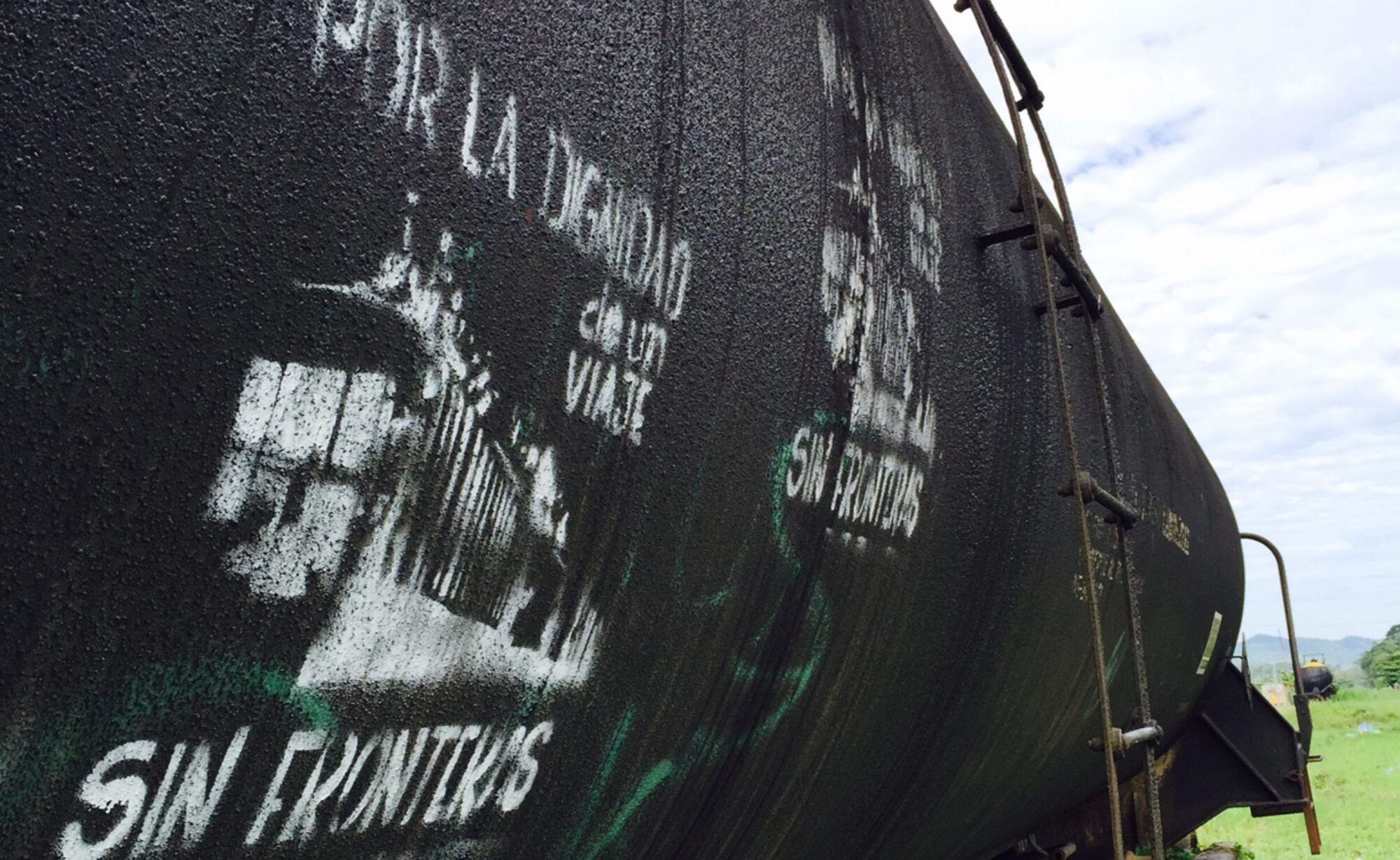From the mountaintops of southern Arizona, you can see a world without borders. I realized this just before I met Juan Carlos. I was about 20 miles from the border but well within the militarized zone that abuts it. I was, in fact, atop the Baboquivari mountain range, a place sacred to the Tohono O’odham, the Native American people who have inhabited this land for thousands of years. At that moment, however, I couldn’t see a single Border Patrol agent or any sign of what, in these years, I’ve come to call the border-industrial complex. On the horizon were just sky and clouds — and mountain ranges like so many distant waves. I couldn’t tell where the United States ended or Mexico began, and it didn’t matter.
I was reminded of astronaut Edgar Mitchell’s reaction when he gazed back at Earth from the moon: “It was [a] beautiful, harmonious, peaceful-looking planet, blue with white clouds, and one that gave you a deep sense… of home, of being, of identity. It is what I prefer to call instant global consciousness.”
A couple hours after my own peaceful moment of global consciousness, Juan Carlos appeared at the side of a dirt road. I was by then driving in a desolate stretch of desert and he was waving his arms in distress. I halted the car and lowered the window. “Do you want some water?” I asked in Spanish, holding out a bottle, which he promptly chugged down.
“Is there anything else I can do for you?” I asked.
“Can you give me a ride to the next town?”
At that moment, my vision of a borderless world evaporated. Even though I couldn’t see them, I could feel the proximity of armed border agents in their green-striped trucks. Perhaps one of the high-tech surveillance towers in the area already had us in its scope. Maybe I had tripped a motion sensor and a Predator B drone was flying over the car. Unfortunately, I knew far too much about one of the most surveilled borders on this planet and how it’s designed to create a potentially deadly crisis for people like Juan Carlos who cross it.
Although this particular incident happened a couple years ago, the U.S. border strategy still regularly forces such migrants into the deep and dangerous desert, as has been true for the last quarter-century.
The reason I so palpably felt the surveillance system all around me was because I knew that I was risking a prison sentence if I gave a ride to Juan Carlos, who told me he was from Guatemala. So, I hesitated. The natural impulse to help a fellow human being was almost instantly overridden by a law making it a felony to transport him and in any way further his presence in this country.
My hesitation both infuriated me and reminded me of how borders can be internalized. I had to think about what the Border Patrol would notice if they pulled me over, particularly that Juan Carlos only spoke Spanish and that he had brown skin. They would assume he was undocumented. Such racial profiling is encoded in the border-security paradigm.
In the end, I wrote a whole book, Build Bridges, Not Walls: A Journey to a World Without Borders, as a kind of meditation on that moment of hesitation and how it acted like a prism through which I could reflect on my two decades of border reporting. But the book is also a reckoning with the border itself, based on conversations I had with refugees, migrants like Juan Carlos, Border Patrol agents seeking out those like him, border-industrial complex officials making money off such voyagers, journalists and scholars covering the never-ending “crisis” there, indigenous people watching their lands being walled off, and those among them who have visions of how all of this can work differently.
One of the most important conversations of all came with someone who will inherit this wall-plagued world of ours, my five-year-old son, William. One day, on a beach south of San Diego, a Border Patrol agent yelled at him as he ran toward the tall, steel-barred wall there at the border to greet people waving from the other side, in Tijuana, Mexico. I remember him sitting in the sand, trying to grasp why that agent wouldn’t let him go to the fence and be friendly. Later, when we talked over the incident, he asked me: “Why can’t we turn the wall into bikes?”
A good question and, with Donald Trump and his talk of a “big, fat, beautiful wall” gone, there’s been lots of news coverage about Biden-era immigration reform, about “fixing a broken system.” While my expectations are low, there also couldn’t be a better moment to begin to demilitarize our border and turn it into something else. As my son suggested, another world, a world of bikes, not walls — both more humane and more sustainable — is not only possible, but essential to pursue.
Read the rest here as first published at TomDispatch.
